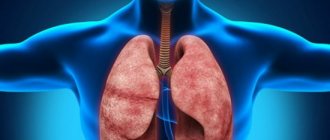Types of plague
Experts identify the following forms of plague:
- cutaneous form;
- bubonic form is the most common form of this disease;
- cutaneous bubonic form - combines the symptoms of the forms of cutaneous and bubonic plague;
- primary septic form – has a short incubation period. Without adequate treatment – ends in death in 100% of cases;
- primary pulmonary form - this form develops during aerogenic infection. Very dangerous form;
- intestinal form.
According to another classification, according to the forms of the disease, plague is:
- local - bubonic, cutaneous, cutaneous-bubonic. These forms can develop into secondary pneumonia and secondary plague sepsis;
- generalized - secondary septic and primary septic;
- externally disseminated - intestinal, primary pulmonary.
The following periods are typical for the plague:
- latent – when there are no symptoms of the disease. This stage is experienced by rodents during hibernation;
- acute – characteristic manifestations of all symptoms.
Stages of the plague:
- Stage 1 – the infection penetrates into the body and enters the lymph nodes. Here the infection lingers for a short time. This stage is characterized by the development of a plague bubo with elements of necrotic, hemorrhagic and inflammatory processes inside the lymph nodes;
- Stage 2 – penetration of infection into the blood. The development of toxicosis with rheological changes in the properties of blood is characteristic. There is a violation of microcirculation in various organs;
- Stage 3 – the infection overcomes the reticulohistiocytic barrier, and also disseminated in various systems and organs. Sepsis develops.
Causes
The reasons that lead to the development of this disease:
- the infection penetrates through a flea bite, conjunctiva, digestive tract, mucous membranes of the upper respiratory tract;
- the infection enters the body when flea waste products are rubbed into the skin (occurs when scratching the bite site);
- rodent hunting;
- processing of rodent carcasses;
- cutting up animal carcasses;
- animal meat processing;
- eating meat from infected animals;
- failure to comply with sanitary standards when working with animals;
- contact with infected animals and rodents;
- failure to comply with personal hygiene rules;
- the infection is widespread;
- contact with an infected person who has a pulmonary form of this disease;
- contact with the contents of a plague bubo;
- contact with the corpses of infected people.
The causative agent of plague is the plague bacillus. The infection is carried by fleas, rodents, mice, rats and other animals. The infection is transmitted by a flea bite. The main carrier of infection is the rat (in cities and ports), but the sources of infection in natural conditions are gophers, gerbils, marmots, voles, pikas and other rodents. Dogs are completely resistant to this infection, but can carry it along with fleas.
What is plague?
Plague is an extremely dangerous, acute zoonotic vector-borne infection that causes severe intoxication, as well as serous-hemorrhagic inflammation in the lungs, lymph nodes and other organs, and it is often accompanied by the development of sepsis.
Brief historical information
In the entire history of mankind, there has never been such a ruthless infectious disease as the plague. It devastated cities, causing record mortality rates. Information has reached our time that in ancient times plague epidemics claimed a huge number of human lives. As a rule, epidemics began after people came into contact with infected animals. Often the spread of this disease turned into a pandemic; three such cases are known.
The first pandemic, called the Justinian Plague, was recorded in Egypt and the Eastern Roman Empire in the period from 527 to 565. The second was called the “great” and “black” death; for 5 years, starting in 1345, it raged in the Mediterranean countries, Western Europe and the Crimea, taking with it about 60 million human lives. The third pandemic began in Hong Kong in 1895 and later spread to India, where more than 12 million people died.
During the last pandemic, important discoveries were made, thanks to which it became possible to prevent the disease, guided by data on the identified causative agent of the plague. It has also been proven that rats contribute to the spread of infection. In 1878, Professor G.N. Minkh discovered the causative agent of the plague; also in 1894, scientists Sh. Kitazato and A. Yersin worked on this issue.
There were plague epidemics in Russia too - starting from the 14th century, this terrible disease periodically made itself known. Many Russian scientists have made great contributions to the study of this disease. Scientists such as I. I. Mechnikov, D. K. Zabolotny, N. F. Gamaleya, N. N. Klodnitsky prevented the spread of the epidemic and treated patients. And in the 20th century, G. P. Rudnev, N. N. Zhukov-Verezhnikov and E. I. Korobkova developed the principles of diagnosis and pathogenesis of plague, and also a vaccine against this infection was created and methods of treating the disease were determined.
Plague in human history
The plague has left devastating traces in the history of mankind. The following epidemics are considered the largest:
- “The Plague of Justinian” (551-580), which began in Egypt and killed more than 100 million people;
- the Black Death epidemic (XIV century) in Europe, brought from Eastern China, which claimed about 40 million lives;
- plague in Russia (1654-1655) – about 700 thousand deaths;
- plague in Marseille (1720-1722) – 100 thousand people died;
- plague pandemic (late 19th century) in Asia – more than 5 million people died.
What causes the plague?
The causative agent of the infection is the non-motile gram-negative facultative anaerobic bacterium Y. Pestis, which belongs to the genus Yersinia and the family Enterobacteriaceae. The plague bacillus, in its biochemical and morphological characteristics, resembles the causative agents of diseases such as pseudotuberculosis, pasteurellosis, yersiniosis and tularemia - humans and rodents are susceptible to them. The pathogen is characterized by polymorphism; it has the appearance of an ovoid rod, which is bipolarly colored. There are several subspecies of this pathogen, which differ in virulence.
The growth of the pathogen occurs in a nutrient medium; to stimulate growth, it requires sodium sulfite or hemolyzed blood. More than 30 antigens, as well as exo- and endotoxins, were found in the composition. Capsules prevent the absorption of bacteria by polymorphonuclear leukocytes, and V- and W-antigens protect them from lysis in the cytoplasm of phagocytes, which is why they multiply inside the cells.
The causative agent of plague is able to persist not only in infected excreta, but also various objects of the external environment contain it. For example, bubo pus can persist for 30 days, and in the corpses of rodents, camels and people - about two months. The sensitivity of the pathogen to sunlight, oxygen, high temperatures, reactions of an acidic environment, as well as some chemicals and disinfectants has been noted. A solution of mercuric chloride (1:1000) can destroy the pathogen in 2 minutes. But the pathogen tolerates low temperatures and freezing well.
Epidemiology
The main source of plague, as well as its reservoir, are wild rodents, of which there are about 300 species, and they are distributed everywhere. But not all animals are capable of preserving the pathogen. In every natural focus there are the main species that store and transmit the infection. The main natural sources are gophers, marmots, voles, gerbils, pikas and others. For anthropourgic centers of plague - cities, ports, the main threat is synanthropic rats. Among them we can distinguish the gray rat, which is also called pasyuk. She usually lives in the sewer systems of large cities. And also the black - Egyptian or Alexandrian rat, living in houses or on ships.
Dogs are resistant to the causative agent of plague, but fleas can become infected from them. There are more and more cases of infections in cats, which can transmit the infection to humans. A person can also get the infection from a camel. Plague infection persists through the transmission of the pathogen to infected animals to healthy ones; fleas, which parasitize rodents, play a special role in this.
If an acute form of the disease develops in rodents, the animals quickly die and the spread of infection (epizootic) stops. But some rodents, for example, marmots, gophers, tarbagans, hibernate, carry the disease in a latent form, and in the spring they become sources of plague, which is why a natural focus of infection appears in their habitat.
Infected people also become sources of plague. For example, if a person has a disease such as pneumonic plague, and also if there is contact with the pus of a bubo, or if fleas become infected from a patient with plague septicemia. Often the cause of the spread of infection is the corpses of plague patients. Of all these cases, people infected with pneumonic plague are considered especially dangerous.
There are quite a few methods of transmission of infection, but the main one is transmissible, but in the pulmonary form of the disease, infection can occur through airborne droplets. The carriers are not only fleas (there are about 100 species), but also ticks, which support the epizootic process in nature, transmitting the infection to rodents, cats, dogs and camels, and they, in turn, carry these parasites into human housing.
The infection is transmitted to humans from fleas not so much through a bite, but due to the fact that feces or regurgitated masses of the insect are then rubbed into the skin. In the intestines of an infected flea, bacteria multiply and produce coagulase. This substance forms a kind of plug or plague block, and it blocks the flow of blood into her body. As a result, the parasite, trying to get enough, regurgitates infected masses onto the skin at the site of the bite. These insects, feeling hungry, try to get enough through animals. Typically, fleas remain infective for about 7 weeks, but there is evidence that some individuals can be carriers for up to a year.
You can also become infected by contact, for example, through the mucous membrane or lesions on the skin. This can happen when cutting and processing the carcasses of infected animals (hares, foxes, saigas and others), as well as when eating this meat.
People are very susceptible to infection, regardless of the method of infection and the age group to which the person belongs. If a person has suffered the plague, he has some immunity to this disease, but the possibility of re-infection is not excluded. Moreover, contracting the plague a second time is not a rare case, and the disease is just as severe.
Main epidemiological signs of plague
Foci of plague in nature can occupy about 7% of the land mass, and have been recorded on almost all continents (the only exceptions are Australia and Antarctica). Every year, the plague infects several hundred people around the world. 43 natural foci have been identified in the CIS, covering an area of at least 216 million hectares. The outbreaks are located on plains - desert, steppe, and in highlands.
Natural foci are divided into two types: “wild” and rat plague. Under natural conditions, plague takes the form of an epizootic of rodents and lagomorphs. Rodents that hibernate in winter carry the disease into the warmer months (spring), and animals that do not hibernate contribute to the formation of two seasonal peaks of plague, which occur during their active reproduction. As a rule, men are more likely to become infected with the plague - this is explained by the fact that they are forced to stay in the natural focus of the plague more often (activities related to hunting, animal husbandry). In urban conditions, rats - gray and black - take on the role of carriers.
If we compare the epidemiology of two types of plague - bubonic and pneumonic, significant differences can be noted. First of all, bubonic plague develops quite slowly, and the pneumonic form can spread very widely in a very short time - this is due to the easy transmission of bacteria. People suffering from bubonic plague are almost non-infectious and low-contagious. There are no pathogens in their secretions, and there are quite a few of them in the pus of buboes.
If the disease has passed into a septic form or the bubonic plague is complicated by secondary pneumonia, which allows the pathogen to be transmitted by airborne droplets, epidemics of primary type pneumonic plague begin, characterized by a high degree of contagiousness. Most often, pneumonic plague appears after bubonic plague, then spreads along with it and very quickly becomes the leading epidemiological and clinical form.
There is an opinion that the infectious agent is capable of remaining in the soil, remaining in an uncultivated state for a long time. At the same time, rodents that dig holes in contaminated soils receive primary infection. Scientists confirm this hypothesis by experimental studies, as well as by searching for the causative agent of plague among rodents during inter-epizootic periods, the ineffectiveness of which allows us to draw some conclusions.
How to get rid of pneumonic plague and is it even possible?
This infectious disease can be cured. However, it must be remembered that treatment of pneumonic plague must be timely. A prolonged absence of a course of therapy will inevitably lead to the death of the patient. Treatment of patients is based on the use of antibiotic drugs, sulfonamides, as well as the administration of therapeutic anti-plague serum. Don’t forget about special dietary supplements (dietary supplements). Their use, without a doubt, will strengthen your body’s resistance to the infection present in the body.
Plague symptoms
It is known that the incubation period of plague ranges from 3 to 6 days, but in epidemic conditions or in the septic form it can be reduced to 1 day. The maximum incubation period that has been recorded is 9 days.
The disease begins acutely, accompanied by a rapid increase in body temperature, severe chills and signs of intoxication. Patients often complain of pain in muscles and joints, pain in the sacrum and in the head. The person vomits (sometimes with blood) and is tormented by thirst. In the first hours of the disease, psychomotor agitation is observed. The patient becomes restless and too active, a desire to run appears (this is where the saying “runs like crazy” comes from), then hallucinations and delusions appear. The person can no longer speak clearly or walk upright. Sometimes, on the contrary, apathy and lethargy are noticed, and due to weakness the patient is unable to get out of bed.
External signs include facial puffiness, hyperemia, and scleral injection. The facial expression takes on a pained look, with a stamp of horror on it, or, as they say, “a mask of the plague.” In severe cases, a hemorrhagic rash appears on the skin. The tongue increases in size and becomes covered with a white coating resembling chalk. Cardiac arrhythmia and tachycardia are also noted, and blood pressure gradually decreases. Even local forms of the disease are characterized by the development of anuria, oliguria, and tachypnea. These symptoms are more pronounced at the initial stage of the disease, but accompany all forms of plague.
In 1970, G. P. Rudnev proposed the following clinical classification of plague:
- local forms (bubonic, cutaneous and cutaneous-bubonic);
- generalized (primary and secondary septic);
- externally disseminated (primary and secondary pulmonary, as well as intestinal).
Cutaneous form
This form of the disease is characterized by the appearance of a carbuncle in the place where the pathogen has penetrated. First, a pustule forms on the skin (the appearance is accompanied by sharp pain) with dark red contents. It is located on the subcutaneous edematous tissue, around it there is a zone of hyperemia and infiltration. If the pustule is opened, an ulcer with a yellowish bottom appears in its place, increasing in size. Then this bottom is covered with a black scab, which is torn off, leaving behind scars.
Bubonic form
This is the most common form of the disease. Bubonic plague affects the lymph nodes that are closest to the site of entry of the pathogen. Usually these are inguinal nodes, sometimes axillary, and less often cervical. Most often the buboes are single, but they can also be multiple. Pain occurs at the site of the next bubo that forms, and this is accompanied by intoxication.
Lymph nodes can be palpated 1–2 days after their appearance; the hard consistency gradually changes to a softer one. The nodes unite into a sedentary conglomerate, which can fluctuate during palpation due to the presence of periadenitis. The disease develops in about 7 days, followed by a period of convalescence. Enlarged nodes can resolve, ulcerate or become sclerotic; this is facilitated by necrosis and serous-hemorrhagic inflammation.
Cutaneous bubonic form
This form represents changes in the lymph nodes and skin lesions. Local forms of the disease can develop into secondary pneumonia and secondary plague sepsis. The clinical characteristics of these forms do not differ from the primary forms of the same diseases.
The primary septic form appears with a short (1-2 days) incubation period and is accompanied by the rapid onset of intoxication, as well as hemorrhagic manifestations - gastrointestinal or renal bleeding, hemorrhages in the mucous membranes and skin. Infectious-toxic shock develops in the shortest possible time. If the disease is not treated, then death is inevitable.
The primary pulmonary form appears after aerogenic infection. It has a short incubation period - it can be several hours, maximum two days. The disease develops acutely, first there is an intoxication syndrome. On the second or third day, cough and pain in the chest area, shortness of breath appear. When coughing, glassy (initially) and then liquid, foamy sputum with blood is released.
The obtained physical data of the lungs are extremely scarce; the x-ray shows signs of lobar or focal pneumonia. Cardiovascular insufficiency increases, which is expressed in tachycardia and a gradual decrease in blood pressure, cyanosis develops. At the terminal stage, patients enter a soporous state, which is accompanied by shortness of breath, hemorrhagic manifestations (extensive hemorrhages), after which the person falls into a coma.
In the intestinal form, patients experience severe intoxication, and at the same time severe abdominal pain, constant vomiting and diarrhea, accompanied by tenesmus. Mucous and bloody discharge are visible in the stool. Other forms of plague are also characterized by similar manifestations (probably due to enteral infection), so the question of the existence of the intestinal form of this disease as an independent one remains controversial.
Eternal hunger
Gram-negative plague bacillus Yersinia pestis
appeared relatively recently - genetic data show that it separated from its closest relative, the bacterium
Yersinia pseudotuberculosis
, which provokes Far Eastern scarlet-like fever in people, no more than 10-20 thousand years ago.
Y. pseudotuberculosis
and its relative
Y. enterocolitica
are respectable pathogenic bacteria that strictly adhere to the main rule of parasites: do not kill their prey too quickly in order to infect others.
However, some subspecies and strains of Y. pestis
are exceptions to the rule. Many of them kill their hosts in two or three days, because she doesn’t really need them alive - she uses fleas and some other ectoparasites to “move.” It is so that the fleas quickly go in search of fresh blood, it kills the owner as quickly as possible.
Yersinia pestis
, causative agent of plague
Larry Stauffer/CDC
Share
To speed up the process even further, the plague bacillus makes the fleas more voracious. It secretes an enzyme, plasminogen activator Pla, which promotes the formation of a “plague block”: a conglomerate of bacteria that clogs the esophagus of insects. Fleas literally cannot get enough, constantly suck blood, and in the process regurgitate the contents of the gastrointestinal tract, overflowing with plague pathogens, infecting new hosts.
The rapid death of the hosts does not allow their immune system to fully respond to the infection, so the victim’s blood becomes overloaded with pathogens—a milliliter can contain up to 100 million bacteria. Even a small amount of blood that a flea can absorb is enough to infect a person.
Xenopsylla cheopis
, one of the carriers of the plague bacillus
Katja ZSM/Wikimedia Commons
Share
If a person becomes infected as a result of a flea bite, this usually leads to the bubonic form of plague - it affects the lymph nodes, which form characteristic swollen bubo nodes. However, depending on the susceptibility of the body, the development of septic and secondary pneumonic plague is possible. In the second case, a person develops plague pneumonia, he begins to cough, spreading the plague bacillus through airborne droplets, and those infected begin to develop the primary pulmonary form - this was the case in Madagascar.
Diagnosis of plague
Differential diagnosis
Various forms of plague - bubonic, cutaneous, and cutaneous bubonic - must be distinguished from diseases such as tularemia, lymphadenopathy, and carbuncles. And the septic and pulmonary forms may have symptoms reminiscent of lung disease, sepsis, and meningococcal etiology.
All forms of plague are characterized by severe intoxication, progressive signs of which appear at the very beginning of the disease. A person’s temperature rises, chills appear, he vomits, and is tormented by thirst. Psychomotor agitation, anxiety, hallucinations and delusions are also alarming. Upon examination, slurred speech, an uncertain gait are revealed, the face becomes puffy, an expression of suffering and horror appears on it, and the tongue is white. Cardiovascular failure, oliguria, and tachypnea develop.
Cutaneous and bubonic forms of plague can be identified by sharp pain in the affected areas, it is easy to determine the stages of development of the carbuncle (first a pustule, then an ulcer, then a black scab and scar); when a bubo forms, periadenitis is observed.
Pulmonary and septic forms are accompanied by extremely rapid development of intoxication, as well as manifestations of hemorrhagic syndrome and infectious-toxic shock. Damage to the lungs is accompanied by sharp pain in the chest and a severe cough with glassy, and then foamy sputum with blood. Physical findings often do not correspond to the patient's noticeable serious condition.
Laboratory diagnostics
This type of diagnosis is based on the use of biological and microbiological, immunoserological and genetic methods. The hemogram shows leukocytosis and neutrophilia with a shift to the left, as well as an increase in ESR. The pathogen is isolated in high-security specialized laboratories created specifically to work with pathogens of the most dangerous infections. Research is being conducted to confirm clinically significant cases of plague and are examining people who are in the center of infection and whose body temperature is higher than normal. Material taken from patients with plague or those who died from this disease is subjected to bacteriological analysis. Punctures are taken from carbuncles and buboes, and ulcer compartments, sputum, mucus and blood are also examined. They conduct experiments with laboratory animals, which can live for about 7 days after being infected with the plague.
As for serological methods, RNAG, RNGA, RNAT, RTPGA, ELISA are used. If PCR gives a positive result, then 6 hours after testing we can talk about the presence of DNA of the plague microbe and confirm the preliminary diagnosis. To finally confirm the presence of the etiology of the plague, a pure culture of the pathogen is isolated and identified.
Complications
There are specific and nonspecific complications. Specific complications are caused by the plague bacterium itself and are almost always fatal. These include:
- infectious-toxic shock;
- cardiovascular failure;
- pulmonary failure;
- thrombohemorrhagic syndrome;
- meningitis;
- cerebral edema.
The cause of nonspecific complications (cellulitis, erysipelas, pharyngitis) are other microorganisms that become active as the main plague process subsides.
Treatment of plague
Patients can be treated exclusively in a hospital setting. Drugs for etiotropic therapy, their doses, and treatment regimens are determined depending on the form of the disease. Typically, the course of therapy is from 7 to 10 days, regardless of the form of the disease. The following drugs are used:
- cutaneous form – cotrimoxazole (4 tablets per day);
- bubonic form - chloramphenicol (dose: 80 mg/kg per day) and streptomycin (dose: 50 mg/kg per day) is used at the same time. The drugs are administered intravenously. The effectiveness of tetracycline has been noted;
- pulmonary and septic forms - a combination of chloramphenicol with streptomycin + doxycycline (dose: 0.3 grams per day) or tetracycline (4-6 g/day), taken orally.
Along with this, massive detoxification therapy is carried out: albumin, fresh frozen plasma, rheopolyglucin, intravenous crystalloid solutions, hemodez, extracorporeal detoxification methods. Drugs are prescribed that help improve microcirculation: picamilon, trental in combination with solcoseryl. Forcing diuresis, cardiac glycosides, as well as respiratory and vascular analeptics, symptomatic and antipyretic drugs.
As a rule, the success of the treatment depends on how timely the therapy was carried out. Etiotropic drugs are usually prescribed at the first suspicion of plague, based on clinical and epidemiological data.
Modern epidemiology
M.P. Kozlov and G.V. Sultanov (1993) provide statistical data based on an analysis of publications from 1900 to 1997, according to which, against the background of a decrease in the total number of patients with all forms of plague, in 1990-1997 an increase in the number of outbreaks of pneumonic plague began forms of infection.
In 1994, pneumonic plague re-emerged in India, which had been considered “plague-free” for 30 years. This time, too, the plague appeared unrecognized - doctors from a number of hospitals in the city of Surat were the first to raise the alarm after five patients admitted to the hospital with pneumonia died during the first day of their stay in the hospital. The first suspicions of plague arose only on the third day, and laboratory confirmation of the diagnosis arrived only three more days later. The rumor about the appearance of the plague instantly spread throughout the city, panic arose, the total number of refugees from the city before the establishment of quarantine is estimated at 250-300 thousand people. As a result, the plague spread throughout India - according to the National Institute of Infectious Diseases (Delhi), 811 seropositive patients were registered in 5 states of India, and one person died from the plague in Delhi. However, even in populous India, this outbreak of plague claimed only 56 lives, of which 52 deaths were recorded in the ill-fated Surat.
is an acute, highly contagious infectious disease with airborne transmission. Characterized by the appearance of symptoms of severe general intoxication, signs of damage to the respiratory and cardiovascular systems, and sepsis. The basis of diagnosis is the bacteriological method and PCR; various body fluids are used for research. Additionally, serological tests are performed. Antibacterial drugs are used as specific therapy, primarily aminoglycosides and tetracyclines. At the same time, symptomatic treatment is prescribed to correct the patient’s condition.
Prevention of plague
Epidemiological surveillance
The forecast of the epidemic and epizootic situation in individual natural foci determines the nature, direction and scope of measures to prevent the disease. This takes into account data obtained from monitoring the increase in the number of people infected with the plague around the world. All countries must report cases of plague, infection movements, animal epizootics, and measures taken to combat the disease to WHO. Typically, a country develops a certification system that records natural plague foci and allows for zoning of territory in accordance with the scale of the epidemic.
Preventive actions
The leading role in the complex of preventive measures is played by measures that prevent the importation of infection from other countries, as well as preventing the development of plague in enzootic foci. To prevent the introduction of infection, international sanitary rules have been created. And in enzootic foci, the number and species composition of rodents is monitored, and animals are examined to detect infection. If an epizootic has been detected, then deratization and various disinsection measures are carried out. Synanthropic rodents are exterminated without identifying infected individuals if more than 15% of those caught in traps are infected. Rodents and ectoparasites on the plains and near human settlements are destroyed by special anti-plague units, and in the settlements themselves by departments of the Center for Sanitary and Epidemiological Surveillance.
If an epizootic of plague is noticed in rodents or cases of the disease are detected among domestic animals, and also if the infection is likely to be imported by an infected person, preventive immunization of the population is carried out. Vaccination can be carried out universally or selectively - to individuals who have connections with those territories where the epizootic exists (hunters, agronomists, geologists, archaeologists). All medical and preventive institutions should have a supply of medicines, as well as protective and preventive means, and it is necessary to develop a scheme for transmitting information and alerting staff. Preventive measures in enzootic areas, as well as for persons who are in contact with pathogens of dangerous infections, are carried out by various anti-plague and many other health care institutions.
Course of the disease
The pulmonary form is characterized by the development of foci of inflammation in the lungs as the primary symptoms of plague.
There are two stages of pneumonic plague:
- The first stage is characterized by the predominance of general plague symptoms; in the second stage of the pulmonary form there are sharp changes in the patient’s lungs. In this form of the disease there is a period of febrile excitement, a period at the height of the disease and a terminal period with progressive shortness of breath and coma.
- The most dangerous period is characterized by the release of microbes into the external environment - the second period of the disease, which has critical epidemic significance. On the first day of illness, a patient with a pneumonic form of plague experiences chills, headaches, pain in the lower back, limbs, weakness, often nausea and vomiting, redness and puffiness of the face, an increase in temperature to 38 - 41 degrees, pain and a feeling of tightness in the chest, difficulty breathing, restlessness, rapid and often arrhythmic pulse. Then, as a rule, rapid breathing and shortness of breath are present. In the agonal period, shallow breathing and pronounced adynamia are observed. A weak cough is recorded, the sputum contains streaks of blood and a significant amount of plague microbes. In this case, occasionally, sputum is absent or has an atypical character.
The clinic of plague pneumonia is characterized by a pronounced paucity of objective data in patients, which is not comparable with the objectively serious condition of the patients; changes in the lungs are practically absent or insignificant at all stages of the disease. Wheezing is practically not audible, bronchial breathing is heard only in limited areas. In this case, patients with the primary pneumonic form of plague without the necessary treatment die within two to three days; absolute mortality and a rapid course of the disease are characteristic.











